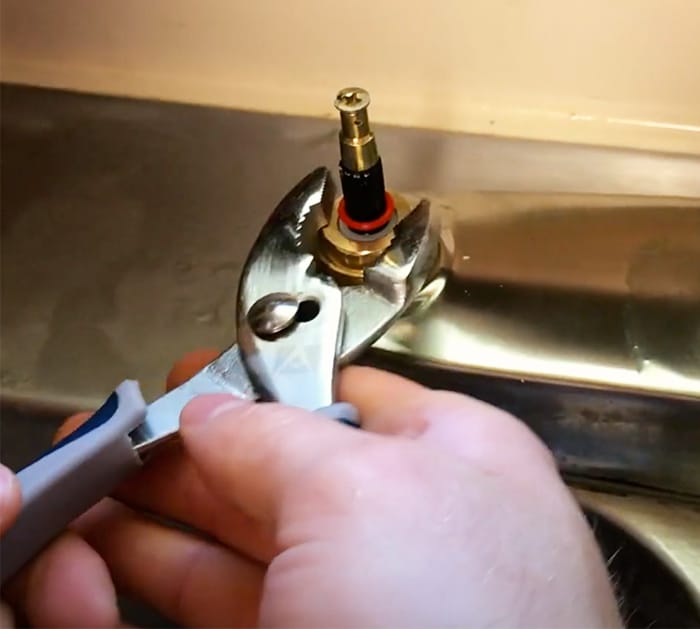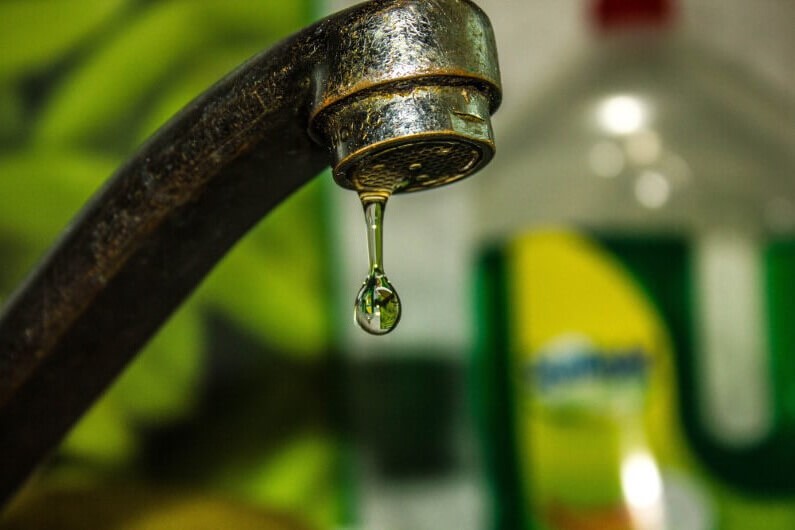Our Advantages of Correcting a Faulty Faucet
Our Advantages of Correcting a Faulty Faucet
Blog Article
Are you hunting for critical info concerning Why It's Important to Fix Leaky Faucets?

Trickling taps may look like a minor trouble, but their effect goes beyond just the nuisance of the sound. From drainage to incurring unneeded economic prices and health dangers, disregarding a leaking tap can cause various effects. In this article, we'll look into why it's essential to address this usual house issue quickly and effectively.
Wastage of Water
Ecological Impact
Trickling faucets contribute significantly to water waste. According to the Epa (EPA), a single faucet trickling at one drip per second can throw away greater than 3,000 gallons of water each year. This not just pressures water sources but also affects ecological communities and wildlife dependent on them.
Step-by-Step Guide to Fixing a Dripping Faucet
Tools Required
Before trying to take care of a leaking faucet, gather the needed devices, including an adjustable wrench, screwdrivers, substitute components (such as washers or cartridges), and plumber's tape.
Common Tap Issues and Their Solutions
Identify the sort of faucet and the details problem causing the drip. Common issues include worn-out washers, rusty shutoff seats, or damaged O-rings. Describe producer instructions or online tutorials for step-by-step advice on repair work.
Financial Expenses
Raised Water Bills
Beyond the environmental effect, leaking taps can blow up water costs considerably. The accumulated wastefulness in time converts into greater energy costs, which could have been avoided with timely repair services.
Possible Residential Property Damages
Additionally, prolonged trickling can cause damage to fixtures and surface areas bordering the tap. Water accumulation can cause discoloration, deterioration, and also architectural concerns if left unattended, resulting in additional fixing prices.
Health and wellness Worries
Mold And Mildew and Mildew Growth
The consistent presence of dampness from a dripping faucet produces a perfect setting for mold and mold development. These fungis not only compromise indoor air high quality yet likewise present health risks, specifically for individuals with respiratory system conditions or allergic reactions.
Waterborne Diseases
Stationary water in trickling taps can come to be a breeding ground for germs and various other pathogens, increasing the danger of waterborne illness. Contaminants such as Legionella bacteria prosper in stagnant water, possibly leading to severe ailments when consumed or breathed in.
Do it yourself vs. Professional Fixing
Pros and Cons of DIY Repair
While some might attempt to repair a trickling tap themselves, DIY repairs feature their very own set of obstacles. Without proper knowledge and devices, do it yourself efforts can exacerbate the problem or result in incomplete repairs, prolonging the trouble.
Advantages of Employing a Professional Plumber
Working with a specialist plumber guarantees that the underlying reason for the trickling faucet is resolved effectively. Plumbing technicians possess the expertise and equipment to diagnose and fix tap problems effectively, conserving time and minimizing the risk of additional damage.
Environmental Responsibility
Individual Payment to Preservation
Taking responsibility for repairing leaking taps lines up with broader efforts towards water conservation and environmental sustainability. Every person's actions jointly make a significant influence on maintaining valuable resources.
Sustainable Living Practices
By focusing on punctual repairs and embracing water-saving practices, people add to lasting living methods that benefit both present and future generations.
Safety nets
Routine Upkeep Tips
To avoid leaking faucets, do regular maintenance such as cleansing aerators, inspecting for leaks, and changing worn-out components quickly. Additionally, consider setting up water-saving devices or upgrading to extra reliable fixtures.
Relevance of Prompt Repair Works
Resolving trickling faucets as quickly as they're noticed avoids further water waste and possible damages, inevitably conserving both water and money over time.
Impact on Property Worth
Perception of Well-Maintained Residential Property
Keeping a residential property in good condition, consisting of attending to maintenance concerns like trickling taps, improves its perceived value and value among potential purchasers or occupants.
Impact on Resale Worth
Qualities with well-maintained plumbing components, consisting of faucets, command higher resale values in the realty market. Addressing dripping faucets can contribute to a positive impression during property assessments and negotiations.
Conclusion
Attending to a dripping tap surpasses plain convenience; it's a crucial action toward saving water, minimizing monetary prices, and securing health and wellness and home. Whether through do it yourself repair work or specialist assistance, doing something about it to deal with trickling taps is a small yet impactful way to promote responsible stewardship of resources and contribute to a much healthier, extra sustainable future.
How to Fix a Leaky Faucet: Step-by-Step Repair Guide
A leaky faucet may seem like a simple annoyance, but if it's not fixed promptly, that leak could cost hundreds to potentially thousands. From water damage to mold, mildew, and high water bills, even a tiny leak can be catastrophic if left unattended. Damage like this can even affect the overall value of your home, so it's important to take the right approach for leaky faucet repair. You may need the help of a plumber in some cases, but we've got a few tips you can try on how to fix a leaky faucet before calling the pros.
Four Faucet Types
When you're learning how to fix a leaky faucet, the first step is knowing what kind of faucet you're working with! There are four common types.
Cartridge Faucets
Cartridge faucets come in one- or two-handled varieties. In one-handled cartridge faucets, hot and cold water combines in a single cartridge. In the two-handled versions, hot and cold water are controlled separately and mixed in the faucet.
Ball Faucets
Ball faucets have a single lever you push up and down to adjust the pressure and rotate to change the temperature. A slotted metal ball controls the amount of water allowed into the spout.
Compression Washer Faucets
They're the oldest type of faucet, but they're still used in many homes — especially older ones. Compression faucets have two separate handles that, when turned, raise or lower the washer that seals a water valve. This valve stops water from flowing through the faucet when it is turned off.
Disc Faucets
Disc faucets rarely need to be repaired due to their maintenance-free design. The water flow is controlled by two discs — the upper one raises and lowers against a fixed lower disc, creating a watertight seal. If your disc faucet starts leaking, you may need to replace the seals or clean residue buildup from the inlets.
Fixing a Leaky Faucet
Step 1: Turn Off the Water
Whether you're learning how to fix a leaky bathtub faucet or how to fix a leaky kitchen faucet, always turn off the water supply to your working area when you're fixing a leak. The last thing you want is a flood added to your list of things to fix.
Look for the shutoff valves below your sink or around the tub and turn them clockwise to stop the water flow. If your faucet doesn't have shutoff valves, you may need to turn off the water for the whole house. Check to make sure it's off by turning the faucet on. If nothing comes out, you're ready to start the repair.
Step 2: Take Apart the Faucet
How you disassemble your faucet depends on the type of fixture you have. You can use a flathead screwdriver to remove the caps on top of the handle or handles for cartridge and compression faucets. Inside, you should see handle screws. Unscrew these with a screwdriver to remove the handle.
Disc- and ball-style faucets will typically have an inlet screw near the handle, and removing that will reveal the interior of the faucet.
Detach the Valve Stem
For cartridge- and compression-style faucets, you'll see the inner valve stem or cartridge once you remove the faucet handles. If you have a compression faucet, unscrew the brass valve stem. If you have a cartridge faucet, pull out the cartridge. If your cartridge has been in place for a while, it may require some tools or extra force to remove it due to mineral deposits.
Examine and Replace Parts
Once you've removed the parts, check them out to confirm what needs to be replaced. You may see corroded rubber washers, O-rings, stems, or cartridges. On a ball-style faucet, check the seats and springs for damage.
If you need to repair a leaky disc faucet, check the inlet and seals on the lower disc.
Once you determine what parts must be replaced, visit your local hardware store. Bring the damaged parts with you to ensure you can purchase the correct components to replace them.
Clean Valves and Faucet Cavity
If you've removed a stem or cartridge, you may notice mineral buildup in the faucet's threads. Use white vinegar to clean the valve seat by soaking it for a few minutes, then scrub it away with a soft toothbrush and rinse with warm water. You can also clean the interior of the faucet in the same way.
Reassemble the Faucet
Once your faucet is cleaned and the required parts have been replaced, it's time to reassemble it. Put the pieces back together and slowly turn the water supply back on. Doing this slowly is crucial because too much initial water pressure can damage the new hardware you've just installed.
https://homewarranty.firstam.com/blog/how-to-fix-leaky-faucet

I hope you enjoyed reading our section about Should I Repair or Replace a Leaky Faucet?. Thank you so much for taking time to browse our article. Make sure you take the time to distribute this blog entry if you enjoyed reading it. We truly appreciate reading our article about Why Are My Faucets Dripping (And Can I Fix It Myself)?.
Report this page